At AppBlocks, we're now growing our own herbs!
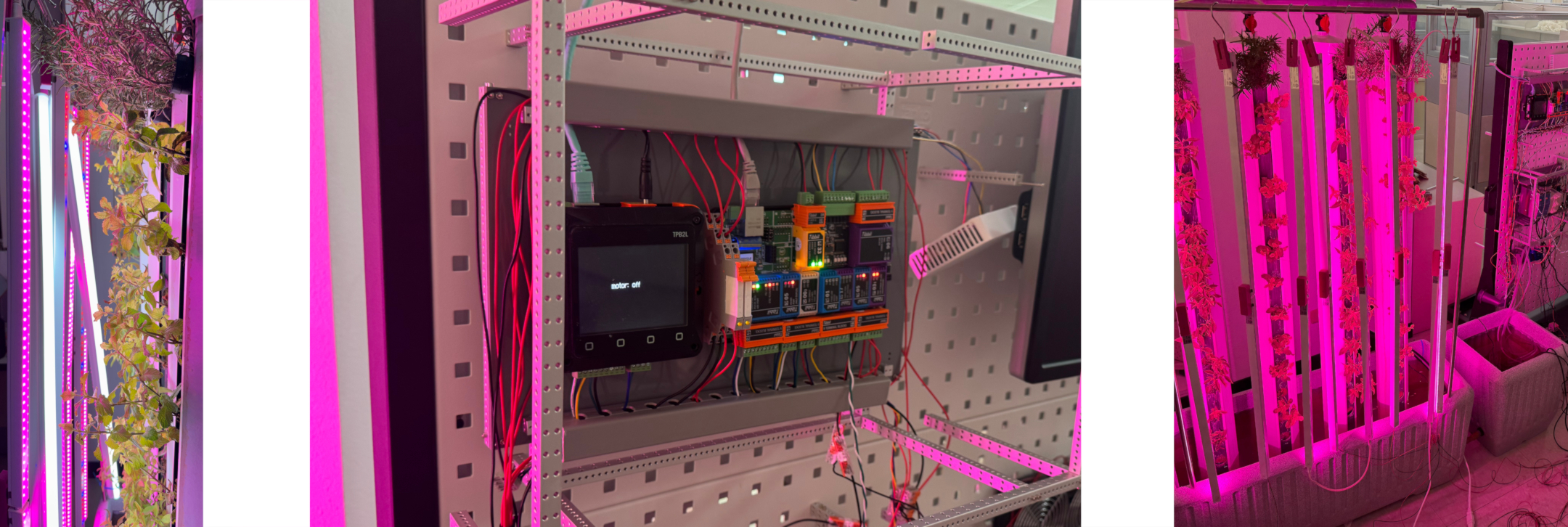
Vertical farms, hydroponics, and automation, all in one system.
This project is an amalgamation of multiple works we have covered at AppBlocks before. It builds on top of two previous projects (Smart Plants and Dosing) and also on other independent capabilities, so it's a good idea to first go over those pages.
In Smart Plants, we talked about possible features that are usually included in indoor farming systems, and now we're "simply" putting everything together.
System overview
The following is a high-level overview of the core system.
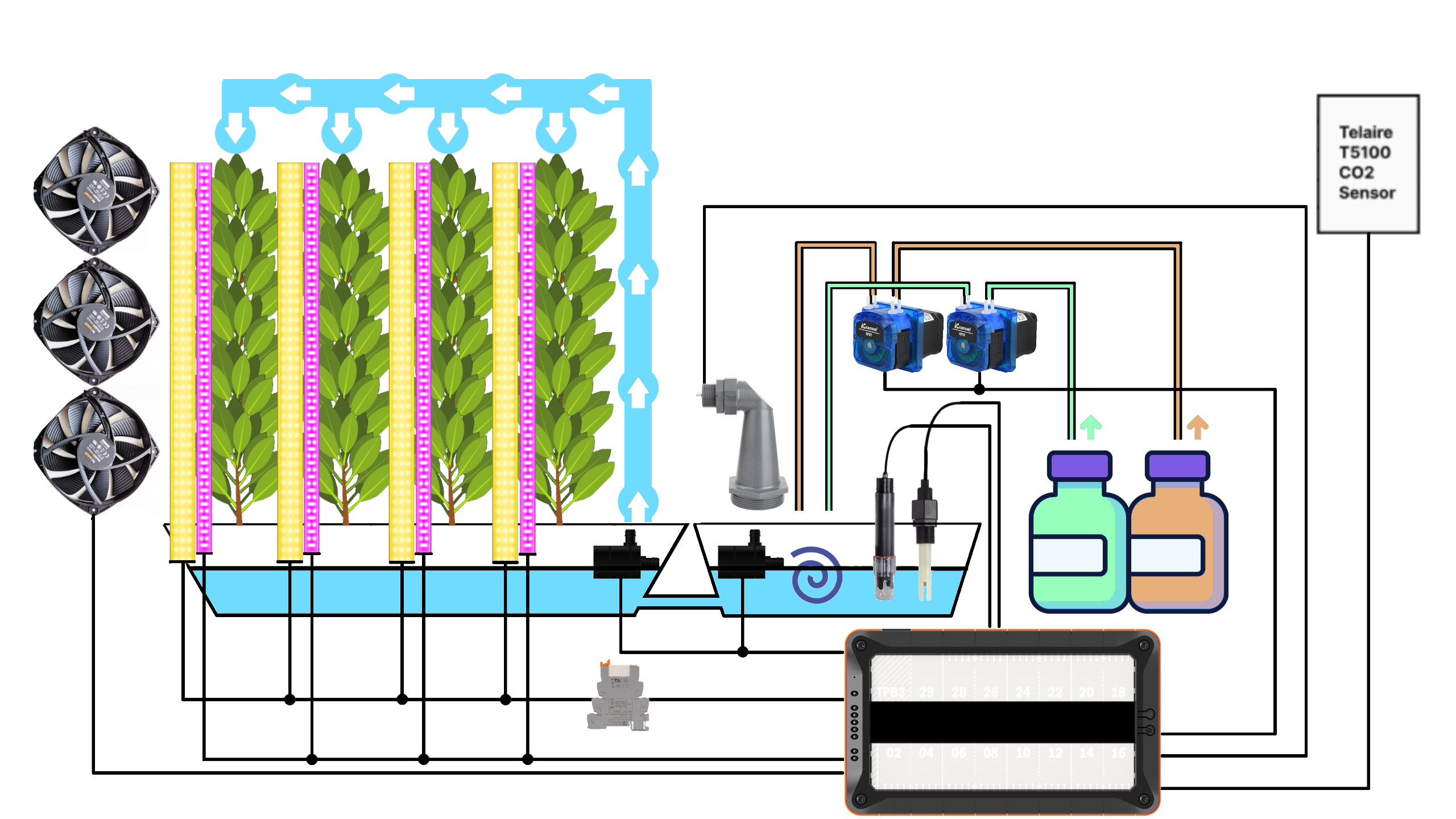
System Breakdown
Lighting
For lighting, we are using two sets of LED strips. One set is red and blue at a lower brightness, while the other set is white and higher brightness. The high-brightness lights are controlled by a relay (similar to the ones here) on 110VAC, while the lower brightness set of lights is controlled by a relay Tibbit at 12VDC.
We use this combination of light because it's more suitable for the variety of plants we want to grow, but your plants might benefit from a different light spectrum, so make sure to pick lights with your plants in mind!
For this project, we opted for only manual light control, but many indoor farming solutions require scheduled light cycles. For more info, look into these projects.
Water
Two 12V pumps are more than enough for this system. One is for the actual irrigation, while the other circulates water within the tank. Each pump is powered by an independent relay on 12VDC.
The irrigation pump runs for 5 minutes every 30 minutes, while the other pump is controlled manually from the dashboard.
Air Flow
Two sets of three fans (6 fans in total) push air between each plant in the system. Both sets are controlled by a single Tibbo relay. This relay is controlled manually from the web dashboard.
Dosing
The dosing portion of the system is identical to the one described in this blog post.
Liquid level
The MaxBotix TankSensor (used in this project) is used to monitor the water level in both tanks, and optionally set off an alarm (through the buzzer) when the water line is too low.
CO2 Monitoring
A Telaire CO2 sensor with an ADC Tibbit. If required, alerts can be set in case CO2 is dangerously high.
More Info
For more information on each individual component, check the following articles:
Local Operation
We have included a TPS2 with a touchscreen to control and monitor the system offline. The TPS2 has the following menus:
- Summary: An overview of the values reported by the sensors (PH, EC, salinity, TDS, temperature, etc.) and the states of each relay (fan, lights, pumps), as well as the state of the dosing pumps.
- Water Control: Manual override for water pumps
- Light Control: Manual override for light
- Dosing Control: Manual override for dosing pumps
- Fan Control: Manual override for fans
- Test Mode: This mode flashes the lights on and off in a predetermined sequence.
Web Dashboard
To show the web dashboard, we're using the LTPS with a browser tab set to the TPS's IP.
B-roll
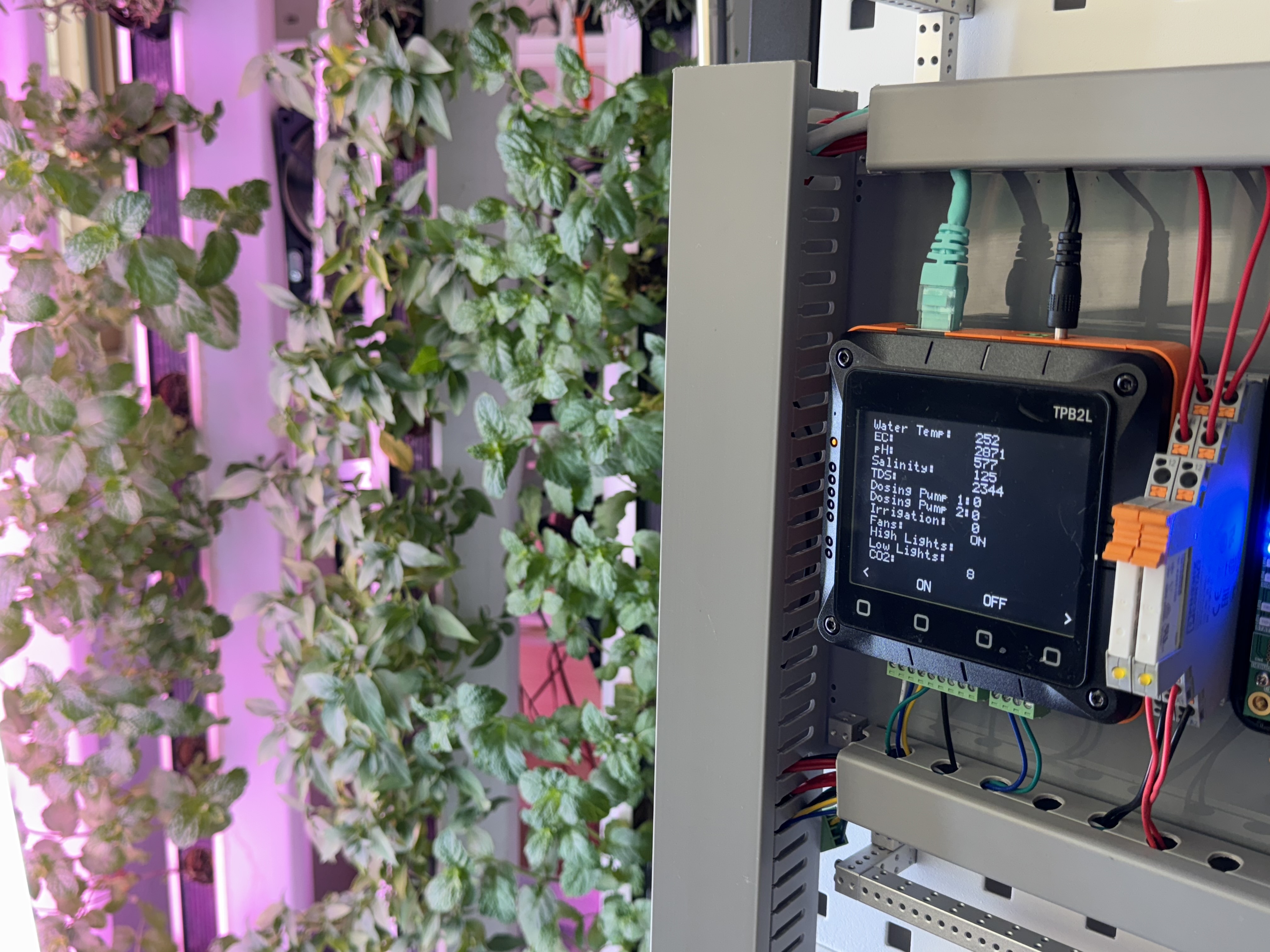
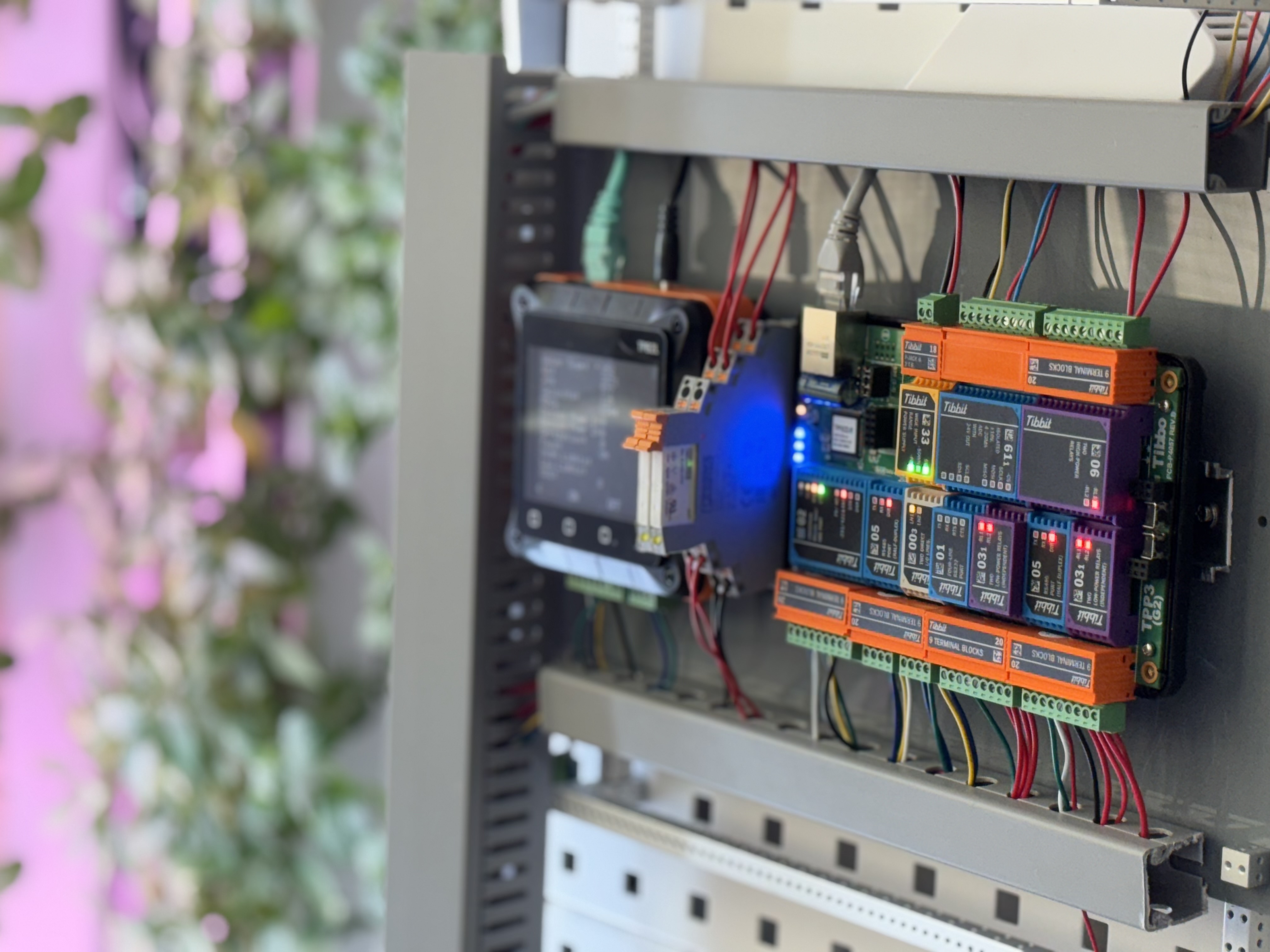
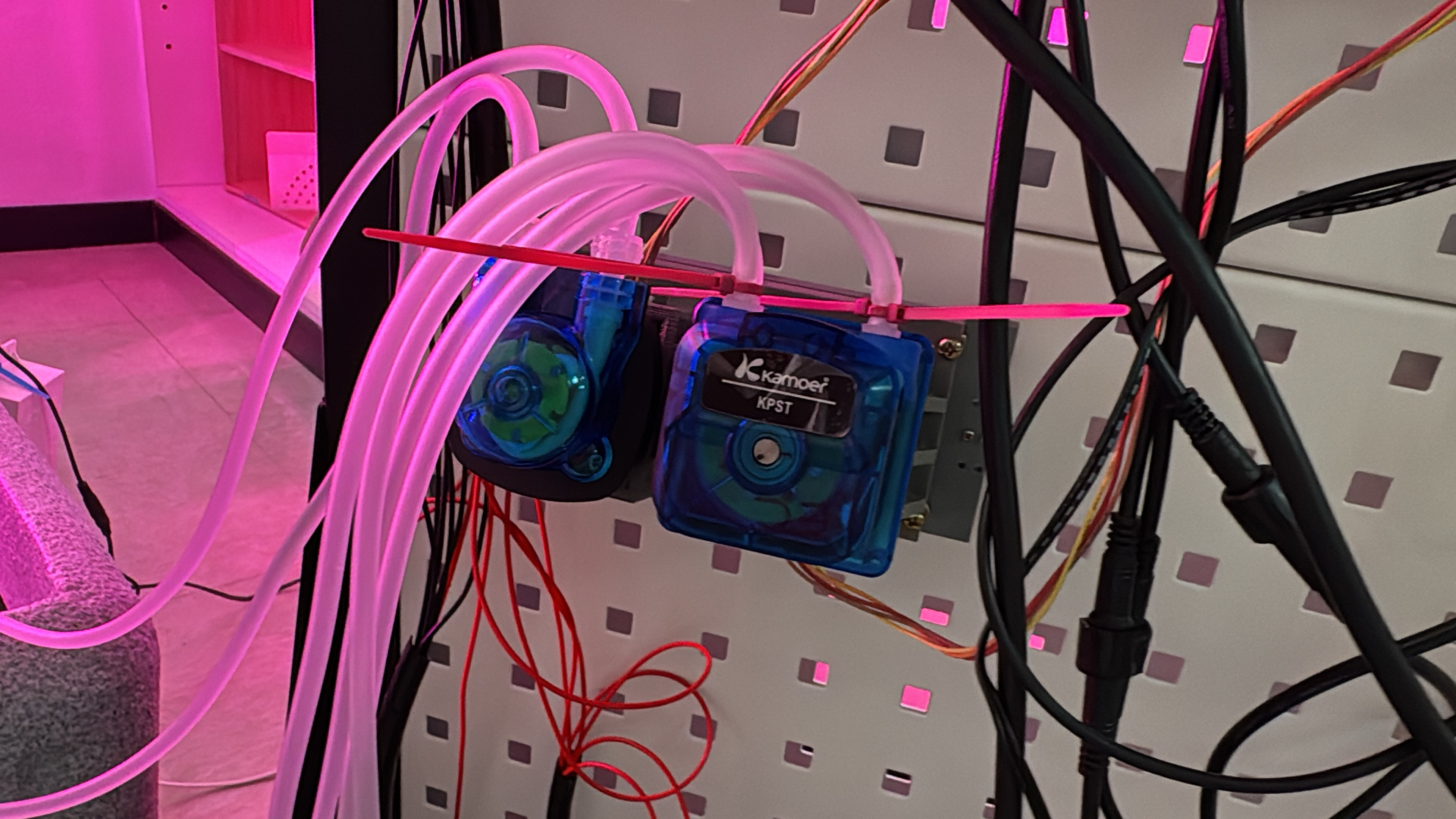
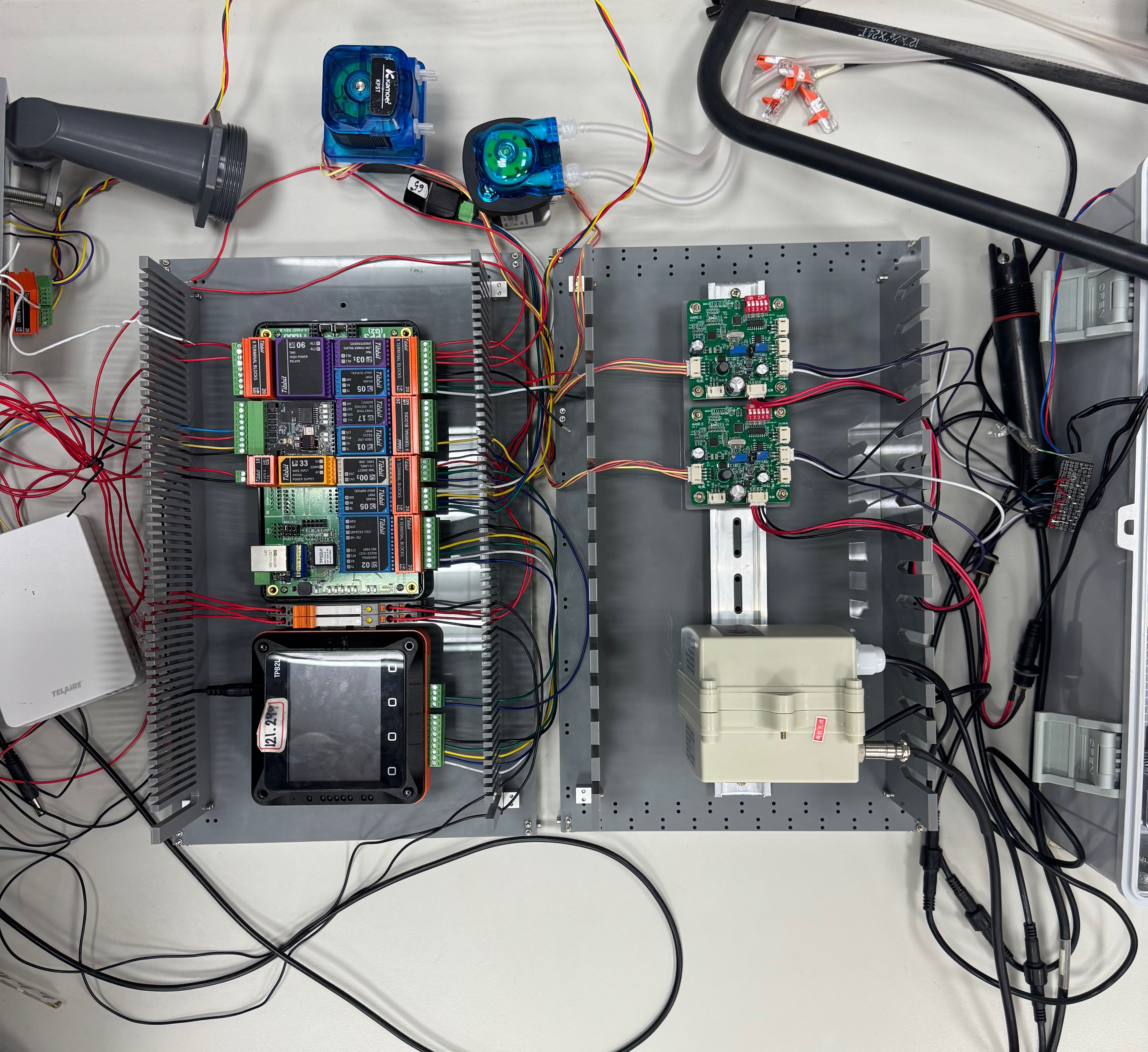
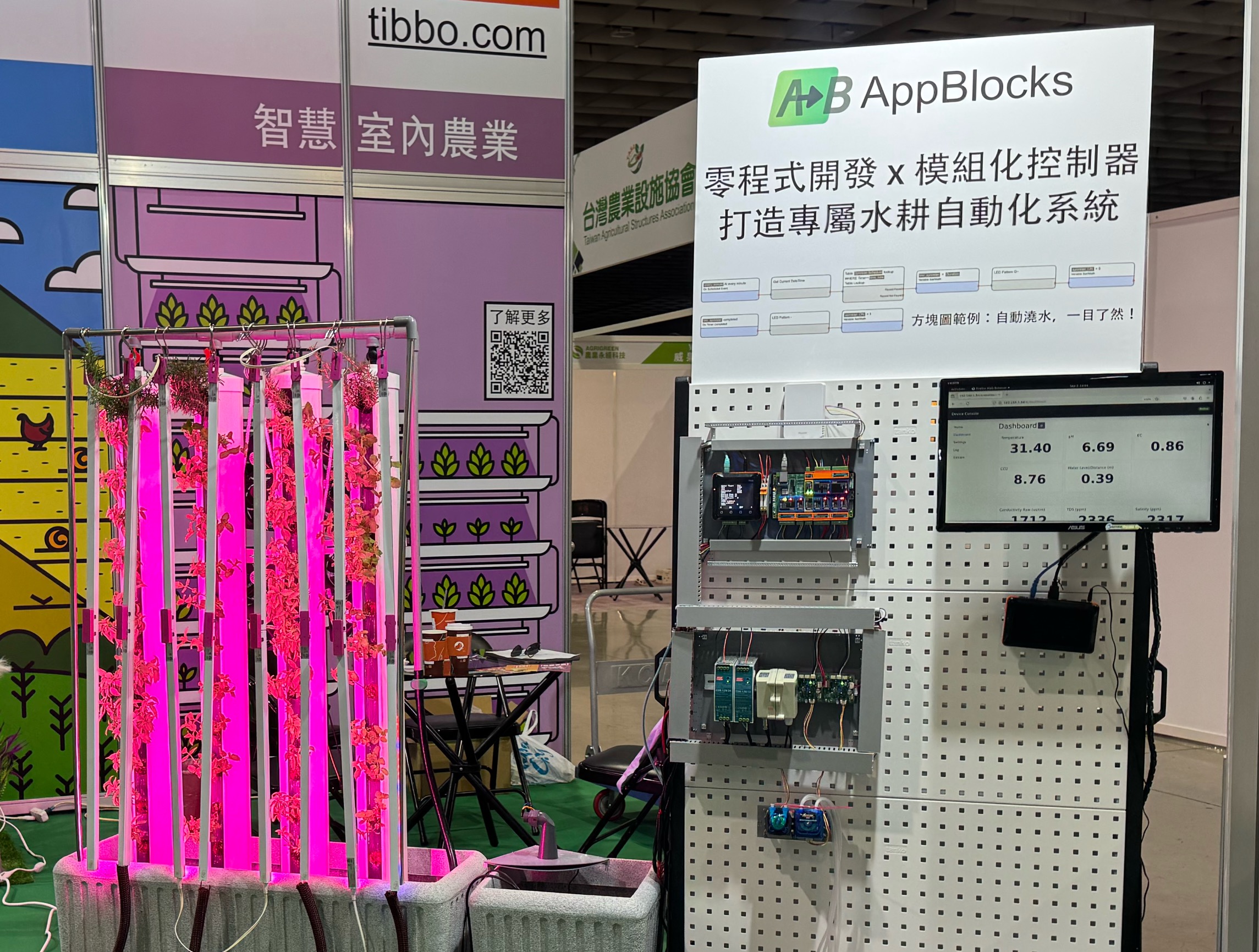
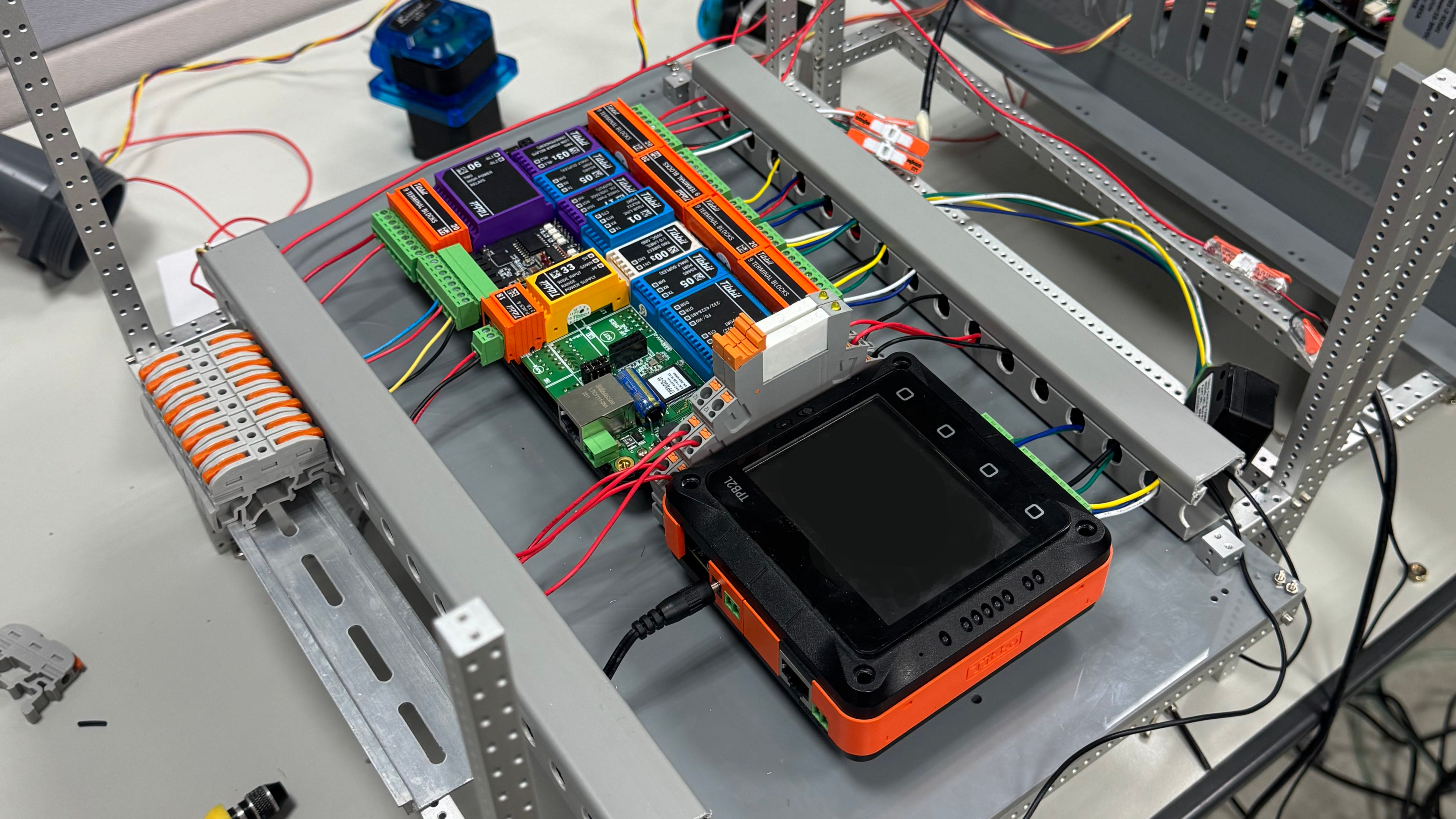
The beauty of this indoor farming system is that it can grow plants in *any indoor space! A warehouse (with some temperature regulation), an underground parking lot, an attic, a garage, the inside of a restaurant, shipping containers, abandoned mine shafts, the sky is the limit!
*Given that there is access to electricity.